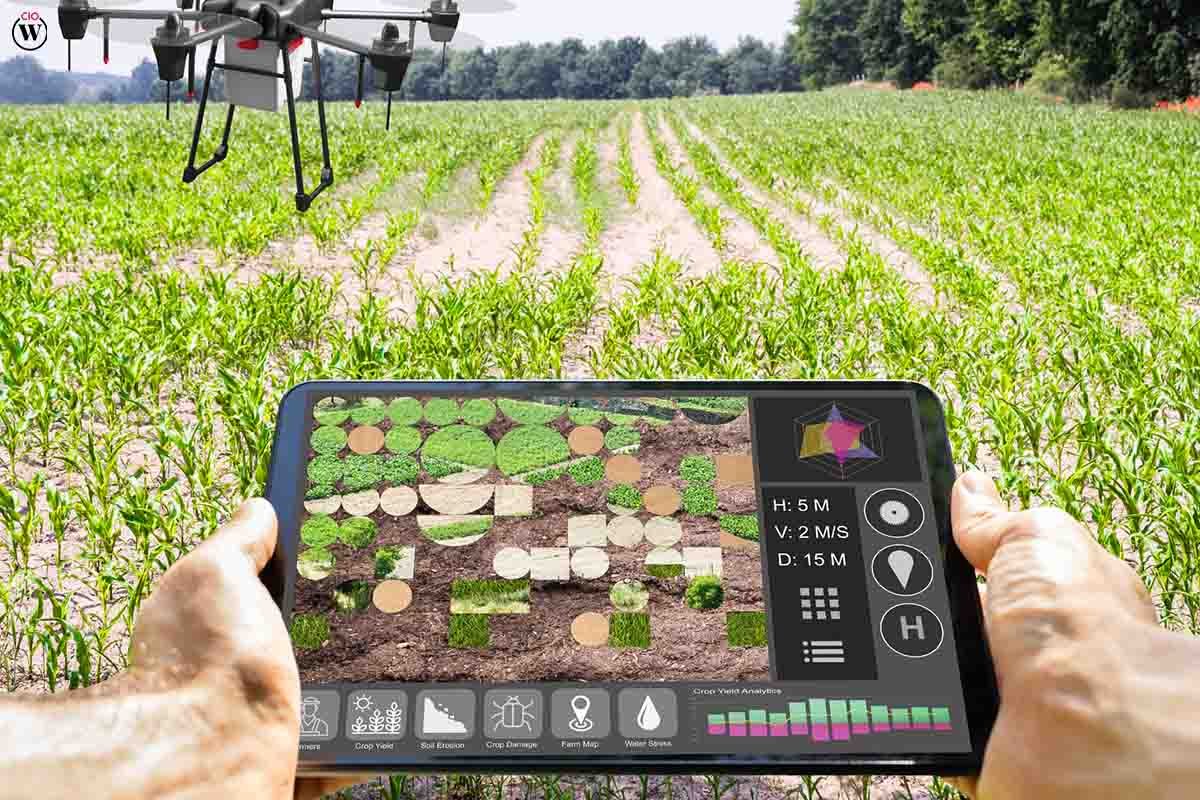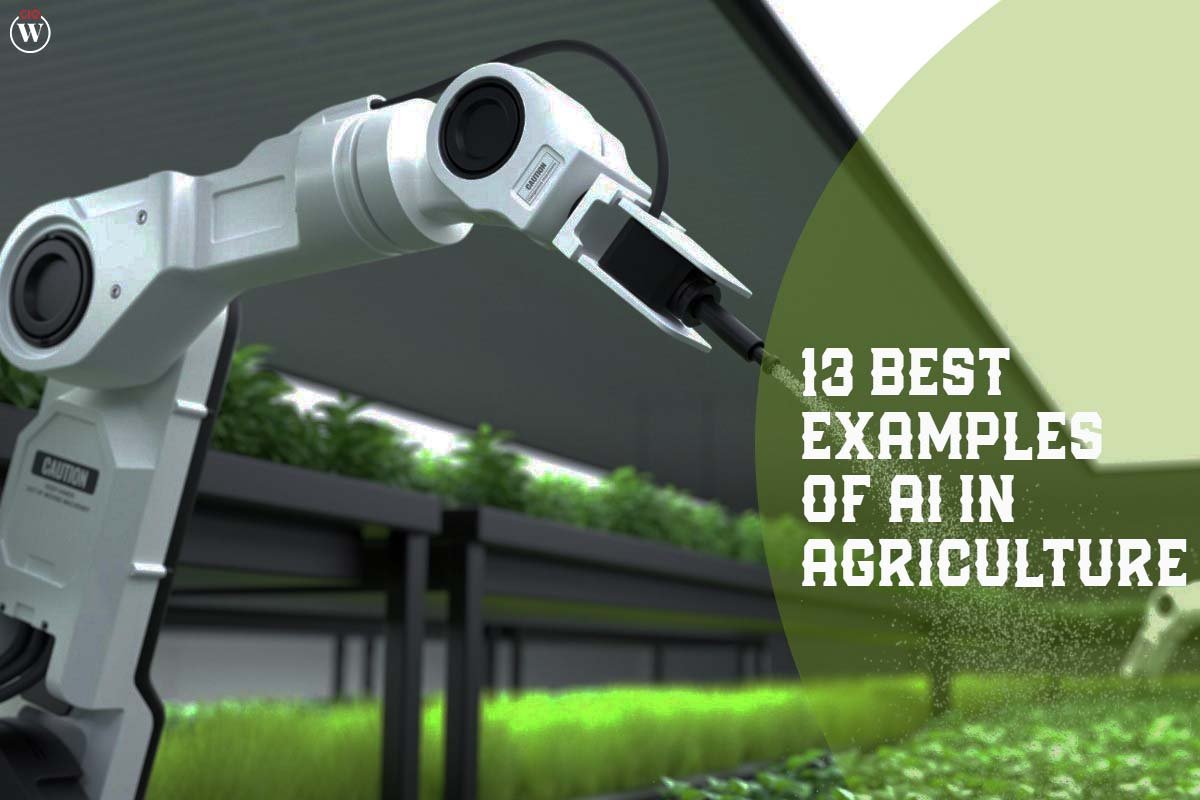AI in Agriculture is used in farming practices like precision agriculture, where farmers track data like soil temperature, humidity, and nutrient levels to optimize crop growth and yields. In addition, this technique may be able to lessen the need for logging by enabling people to cultivate food in urban settings. In order to grow food in a container small enough to be kept inside a house, an Israeli tech firm employed artificial intelligence algorithms to simulate ideal lighting and watering conditions.
Here are the 13 Best Examples of AI in Agriculture;
1. Soil Analysis and Optimization
In the context of agriculture, soil plays a key role. Cost-effective and energy-efficient soil examination is crucial for a successful agricultural field.
Soil temperature, water content, soil microbiology, and soil density are all crucial factors to consider when deciding which plant species to use. Machine learning techniques may be used to study evaporation rates and other processes involved in crop production.
Soil micronutrients and macronutrients are crucial to the growth and development of plants. AI in Agriculture The yield of a crop may be predicted in terms of both quality and quantity using the same criteria. Afterward, once the crops have been planted, it is essential to monitor their development for the sake of maximizing output. To make adjustments for improved crop health, it is essential to understand the connections between crop growth and the environment in which it will grow.
2. Precision Farming
In order to maximize crop yields, farmers are increasingly turning to “precision farming,” a method that utilizes data to better understand what their plants need to grow and flourish. This technique has been used by mobile agricultural yield monitors to take spot harvest measurements, providing farmers with insight into the most and least productive areas of their fields.

By associating this information with specific GPS coordinates, they may create yield maps. Specifically, AI in Agriculture and ML may aid by anticipating how adjusting various inputs would affect the final result. Machine learning algorithms may be used to try out different scenarios and bring farmers closer to optimum production when certain aspects or sets of variables change.
Artificial intelligence (AI) is used in the farming industry to aid in the diagnosis of plant diseases, pests, and insufficient plant nutrition. sensors equipped with artificial intelligence can detect the presence of weeds, zero in on them, and then decide where and how much herbicide to apply within the safety zone. This reduces the likelihood that harmful chemicals may build up in our food supply due to an increase in the usage of herbicides.
3. Improves Decision Making
Instead of depending on error-prone, labor-intensive tasks, farmers may use AI-powered robots to execute sophisticated and supervised activities, such as picking just the ripe fruits and vegetables in a crop. Because of this, less food is wasted and more is produced since ripe veggies are not accidentally left on the vine.
For better agricultural practices, predictive analytics might be a game-changer. Artificial intelligence (AI) allows farmers to gather and analyze far more data than possible. Artificial intelligence (AI) AI in Agriculture might help farmers with crucial tasks including gauging consumer interest, forecasting sales prices, and planning planting and harvesting schedules.
4. Breeding Species
Plant breeding is a lengthy process that requires careful attention to detail in order to produce the desired results, like plants that thrive in a given environment or that satisfy a particular dietary need. Analysis of buyer personas and the use of various techniques for mutation detection in plants are part of this process.

Deep learning algorithms may aid, speed up, and simplify agricultural performance by analyzing recent data on agricultural success in a variety of climates and ecosystems, as well as consumer buying trends relating to certain crops. These results might be used to inform the development of a probability model for predicting with high accuracy which genetic characteristics will yield which crops that farmers and consumers would want.
5. Weed & Disease Detection and Prevention
Diseases and weeds may have a significant impact on production and crop quality, but they can be detected and eradicated using eco-friendly methods with the help of robust machine-learning models and AI in Agriculture powered systems.
For instance, robots equipped with artificial intelligence can eliminate weeds manually, saving farmers money and time on pesticides. Robots may be programmed to proactively identify sick plants and eliminate them. Putting aside robots, environmental data might be used to improve crop health and stop the spread of disease.
6. Enhancing Indoor Farming Environments
Artificial intelligence (AI) might be used to improve indoor agricultural conditions including climate, temperature, humidity, moisture, and sunlight. By keeping an eye on the plants with the help of implanted cameras and sensors, one may exert active control over the surrounding environment.
The gathered data is then fed into neural networks and logic controllers. It removes the element of surprise when determining the optimal growing conditions for a variety of crops. With its help, farmers may make their environments more conducive to crop growth.
7. Irrigation Management
Anything in excess is undesirable. Using too much water may have negative consequences, so you cannot make a choice lightly. The amount of water needed by a crop fluctuates based on a number of parameters like the season, the kind of soil, and the weather, all of which farmers may use AI in Agriculture and machine learning to determine. Even in a well-regulated greenhouse, water requirements may change. Artificial intelligence technologies help farmers adapt their water irrigation infrastructure in response to shifting conditions.
8. Mapping Yield with Demand
The cutting-edge AI in Agriculture and machine learning technologies at the core of precision farming enable predictions that are more accurate than those based just on historical data. Since they can now do multidimensional analysis, they have a better chance of matching agricultural supply with demand. Improved forecasting leads to less food waste, and it’s made possible by the combination of sensor and camera data with computer vision technology.
9. Agricultural Robots
Back when we were younger, we dreamed of a day when robots would do all of our jobs for us. That time has come, and with the assistance of today’s AI in Agriculture systems, robots are even being designed to assist farmers.
Although many businesses are working on constructing such robots, it is expected that once completed, these robots would be able to effectively do a number of tasks in the agricultural industry. The gathering of crops is only one job that may be readily completed by these robots.
10. Weed Control
You may lose your whole crop to weed if you don’t treat it properly. Several robots designed with the assistance of AI in Agriculture are now under development; their primary function will be to manage weed growth on our agricultural land.

There are more than 250 different species of weed crops, and it is impossible for humans to tell whether or not the growth they see on their farmland is weed growth or intended crop growth. Therefore, with the aid of these weed control robots, they would be able to eradicate all weed growth from our irrigation property with no disruption.
11. Farm Data Software
When trying to keep track of the total crop created each month and each year, a lot of individuals have a hard time doing the math and keeping the records. In light of this, AI in Agriculture is being used to develop a number of useful applications and programs, the first of which would allow us to acquire an approximate estimate of the next generation of crops.

In addition, it provides us with a record of the actual harvest and provides a number of suggestions for improving crop yields.
12. Crop Analysis
We can’t do a comprehensive inspection of our harvest since we can’t see the individual plants with our narrow field of view. However, with the aid of AI in Agriculture, we can develop software that will allow us to accurately analyze our police force using tools like drones and computers.
Also, we’d be able to see which areas of our crop are flourishing and which ones require more attention. These drones already exist and are in use in many places around the globe today. SkySquirrel technology is a leader in the development of AI in Agriculture analysis.
13. Farm Data Software
When trying to keep track of the total crop created each month and each year, a lot of individuals have a hard time doing the math and keeping the records. In light of this, AI in Agriculture is being used to develop a number of useful applications and programs, the first of which would allow us to acquire an approximate estimate of the next generation of crops.
In addition, it provides us with a record of the actual harvest and provides a number of suggestions for improving crop yields.









